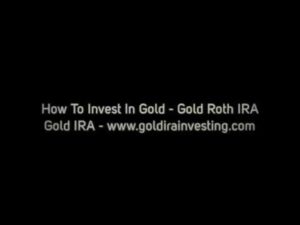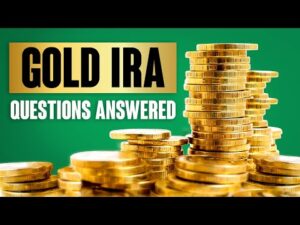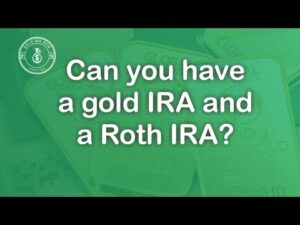
Technical Indicators Reflect a Complex Market Situation
As of Dec. 18, 2023, ethereum exhibits a complex interplay of bearish and bullish signals across various technical indicators. The second-leading crypto asset, currently priced at $2,125 to $2,165, faces a critical juncture in its market trajectory, as revealed by the 4-hour and daily charts, oscillators, and moving averages.
4-Hour Chart Analysis: Predominantly Bearish Picture
The 4-hour chart analysis for ethereum (ETH) paints a predominantly bearish picture, characterized by a distinct downtrend. This trend is evident through the formation of lower highs and lower lows, a classic indicator of bearish momentum. Despite a recent uptrend at a potential short-term reversal, the overarching downward trend suggests this could be a mere temporary pause. For investors considering short positions, the $2,235 per ETH price level emerges as a key resistance point to watch.
Daily Chart: Broader Historical Context
In contrast, the daily chart provides a more expansive view of ether's price movements, encompassing a broader historical context. Previously, ethereum enjoyed an uptrend, peaking around $2,407, before succumbing to the current downtrend. The break below the crucial support level of $2,100 underscores a strong bearish sentiment. This longer-term perspective is essential for investors seeking to identify potential entry points for both short and long-term positions.
Mixed Outlook from Oscillators
Oscillators, often used to gauge market momentum and potential reversals, present a mixed outlook. The relative strength index (RSI) at 47.6, along with the Stochastic, commodity channel index (CCI), average directional index (ADI), and awesome oscillator, all hover in neutral to bearish territory. These indicators suggest a market in flux, with no clear directional bias, adding complexity to investment decision-making.
Dichotomy in Moving Averages
Moving averages (MAs), which help identify trends and potential reversals over various timeframes, also exhibit a dichotomy. Short-term moving averages, like the 10-day and 20-day exponential and simple moving averages (EMAs and SMAs), signal negative sentiment, indicative of immediate bearish pressure. Conversely, longer-term averages, such as the 50-day, 100-day, and 200-day EMAs and SMAs, advise a positive outlook, reflecting a potential shift in the longer-term trend.
A Delicate Balance
The confluence of these indicators suggests that ether's market is in a delicate balance. The bearish signals from the 4-hour chart and short-term moving averages are counterbalanced by the bullish outlook in the longer-term moving averages. This situation calls for a cautious approach, particularly for those considering long positions, as the market's bearish tilt remains a significant factor.
Bull Verdict: Strength in Longer-Term Moving Averages and Historical Resilience
Despite the current bearish indicators on the 4-hour chart and short-term moving averages, the bull verdict for ethereum as of Dec. 18, 2023, hinges on the strength of the longer-term moving averages and the historical resilience of the asset. The neutral positioning of oscillators like the RSI and ADI suggests a potential for trend reversal — if the market can sustain above key support levels and breach the resistance near.
Bear Verdict: Persistence of Downward Trend
The bearish verdict for ether, based on the same data from Dec. 18, 2023, is primarily driven by the persisting downward trend on the 4-hour chart and the bearish indications from short-term moving averages. The failure to break above the key resistance level of $2,235 and the recent trend of lower highs and lower lows point towards continued bearish dominance. Unless there's a significant shift in market sentiment or a breakout above crucial resistance levels, the bearish trend is likely to prevail.
What do you think about ether's market action on Monday morning? Share your thoughts and opinions about this subject in the comments section below.
Frequently Asked Questions
Can the government take your gold
You own your gold and therefore the government cannot seize it. You have earned it by working hard for it. It belongs exclusively to you. There may be exceptions to this rule. You could lose your gold if convicted of fraud against a federal government agency. Your precious metals can also be lost if you owe tax to the IRS. You can keep your gold even if your taxes are not paid.
What proportion of your portfolio should you have in precious metals
To answer this question we need to first define precious metals. Precious metals refer to elements with a very high value relative other commodities. They are therefore very attractive for investment and trading. Gold is by far the most common precious metal traded today.
There are many other precious metals, such as silver and platinum. The price for gold is subject to fluctuations, but stays relatively stable in times of economic turmoil. It is also relatively unaffected both by inflation and deflation.
As a general rule, the prices for all precious metals tend to increase with the overall market. However, the prices of precious metals do not always move in sync with one another. If the economy is struggling, the gold price tends to rise, while the prices for other precious metals tends to fall. This is because investors expect lower interest rates, making bonds less attractive investments.
However, when an economy is strong, the reverse effect occurs. Investors want safe assets such Treasury Bonds and are less inclined to demand precious metals. They become less expensive and have a lower value because they are limited.
You must therefore diversify your investments in precious metals to reap the maximum profits. Furthermore, because the price of precious Metals fluctuates, it is best not to focus on just one type of precious Metals.
How much should I contribute to my Roth IRA account?
Roth IRAs are retirement accounts that allow you to withdraw your money tax-free. The account cannot be withdrawn from until you are 59 1/2. There are some rules that you need to keep in mind if you want to withdraw funds from these accounts before you reach 59 1/2. First, your principal (the original deposit amount) cannot be touched. This means that you can't take out more money than you originally contributed. If you decide to withdraw more money than what you contributed initially, you will need to pay taxes.
The second rule says that you cannot withdraw your earnings without paying income tax. Withdrawing your earnings will result in you paying taxes. Consider, for instance, that you contribute $5,000 per year to your Roth IRA. Let's also say that you earn $10,000 per annum after contributing. On the earnings, you would be responsible for $3,500 federal income taxes. You would have $6,500 less. This is the maximum amount you can withdraw because you are limited to what you initially contributed.
Therefore, even if you take $4,000 out of your earnings you still owe taxes on $1,500. In addition, 50% of your earnings will be subject to tax again (half of 40%). Even though you had $7,000 in your Roth IRA account, you only received $4,000.
There are two types of Roth IRAs: Traditional and Roth. A traditional IRA allows you to deduct pre-tax contributions from your taxable income. Your traditional IRA can be used to withdraw your balance and interest when you are retired. A traditional IRA can be withdrawn up to the maximum amount allowed.
Roth IRAs do not allow you to deduct your contributions. You can withdraw your entire contribution, plus accrued interests, after you retire. There is no minimum withdrawal amount, unlike traditional IRAs. You don't have to wait until you turn 70 1/2 years old before withdrawing your contribution.
How is gold taxed within an IRA?
The fair market value of gold sold is the basis for tax. Gold is not subject to tax when it's purchased. It is not income. If you sell it after the purchase, you will get a tax-deductible gain if you increase the price.
Loans can be secured with gold. Lenders try to maximize the return on loans that you take against your assets. This often means selling gold. However, there is no guarantee that the lender would do this. They may hold on to it. Or they might decide to resell it themselves. In either case, you risk losing potential profits.
If you plan on using your gold as collateral, then you shouldn't lend against it. You should leave it alone if you don't intend to lend against it.
Is gold a good investment IRA?
If you are looking for a way to save money, gold is a great investment. It can be used to diversify your portfolio. But gold is not all that it seems.
It has been used throughout history as currency and it is still a very popular method of payment. It's sometimes called “the world's oldest money”.
Gold, unlike other paper currencies created by governments is mined directly from the earth. Because it is rare and difficult to make, it is extremely valuable.
The supply and demand for gold determine the price of gold. The strength of the economy means people spend more, and so, there is less demand for gold. This results in gold prices rising.
On the other hand, people will save cash when the economy slows and not spend it. This increases the production of gold, which in turn drives down its value.
It is this reason that gold investing makes sense for businesses and individuals. If you make an investment in gold, you can reap the economic benefits whenever the economy is growing.
Additionally, you'll earn interest on your investments which will help you grow your wealth. Additionally, you won't lose cash if the gold price falls.
Can I buy or sell gold from my self-directed IRA
Although you can buy gold using your self-directed IRA account, you will need to open an account at a brokerage like TD Ameritrade. Transfer funds from an existing retirement account are also possible.
The IRS allows individuals to contribute up to $5,500 annually ($6,500 if married and filing jointly) to a traditional IRA. Individuals can contribute as much as $1,000 per year ($2,000 if married filing jointly) to a Roth IRA.
You should consider buying physical gold bullion if you decide to invest in it. Futures contracts, which are financial instruments based upon the price of gold, are financial instruments. They let you speculate on future price without having to own the metal. Physical bullion, however, is real gold and silver bars that you can hold in your hand.
Statistics
- Gold is considered a collectible, and profits from a sale are taxed at a maximum rate of 28 percent. (aarp.org)
- (Basically, if your GDP grows by 2%, you need miners to dig 2% more gold out of the ground every year to keep prices steady.) (smartasset.com)
- Contribution limits$6,000 (49 and under) $7,000 (50 and up)$6,000 (49 and under) $7,000 (50 and up)$58,000 or 25% of your annual compensation (whichever is smaller) (lendedu.com)
- Indeed, several financial advisers interviewed for this article suggest you invest 5 to 15 percent of your portfolio in gold, just in case. (aarp.org)
- If you accidentally make an improper transaction, the IRS will disallow it and count it as a withdrawal, so you would owe income tax on the item's value and, if you are younger than 59 ½, an additional 10% early withdrawal penalty. (forbes.com)
External Links
investopedia.com
law.cornell.edu
- 7 U.S. Code SS7 – Designation Boards of Trade as Contract Markets
- 26 U.S. Code SS 408 – Individual retirement account
wsj.com
- Saddam Hussein's InvasionHelped Uncage a Bear in 1990 – WSJ
- Do you want to keep your IRA gold at home? It's not exactly legal – WSJ
finance.yahoo.com
How To
Gold IRAs are a growing trend
The gold IRA trend is growing as investors seek ways to diversify their portfolios while protecting against inflation and other risks.
The gold IRA allows owners to invest in physical gold bullion and bars. It is a tax-free investment that can be used to grow wealth and offers an alternative investment option to those who are concerned about stocks or bonds.
Investors can have confidence in their investments and avoid market volatility with a gold IRA. Investors can protect themselves from inflation and other possible problems by using the gold IRA.
Investors also benefit from physical gold's unique properties, such as durability and portability.
A gold IRA provides many additional benefits. One is the ability for heirs to quickly transfer ownership of gold. Another is the fact that gold is not considered a currency or a commodities by the IRS.
Investors who seek financial stability and a safe haven are finding the gold IRA increasingly attractive.
—————————————————————————————————————————————————————————————-
By: Jamie Redman
Title: Ethereum Faces Critical Juncture as Bearish and Bullish Signals Clash
Sourced From: news.bitcoin.com/ethereum-technical-analysis-eth-succumbs-to-bearish-pressure-and-upper-resistance/
Published Date: Mon, 18 Dec 2023 14:45:35 +0000













